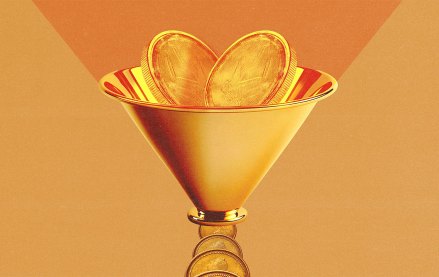Digiday Research: 40 percent of marketers approve of their audience-targeting abilities

This research is based on unique data collected from our proprietary audience of publisher, agency, brand and tech insiders. It’s available to Digiday+ members. More from the series →
Digiday’s “Research in brief” is our newest research installment designed to give you quick, easy and digestible facts to make better decisions and win arguments around the office. They are based on Digiday’s proprietary surveys of industry leaders, executives and doers. See our earlier research on the publisher pivot to video here.
Certain topics in advertising seem ever-present, like ad fraud, transparency and audience targeting, to name a few.
Audience targeting has been a critical component of marketing since the dawn of advertising. Despite this, most marketers remain lukewarm about their company’s audience-targeting capabilities.
In a recent survey of industry leaders at the Digiday Programmatic Marketing Summit, we found that only 40 percent of respondents were satisfied with their ability to target audiences at scale. Marketers seemed generally indifferent about their scaled audience-targeting capabilities. Only 9 percent indicated they were on the extremes of very satisfied or unsatisfied. 
The data and insights powering audience targeting have come a long way with the proliferation of programmatic marketing and enhanced tracking tools. So why aren’t marketers more enthused about their targeting capabilities at scale?
The fact that more than half of all audience-based campaigns fail to reach their target audience probably has something to do with it. A report by Marketing Week citing Nielsen research in the U.K. found that 53 percent of digital campaigns aren’t being viewed by the intended user.
Audience targeting has been thrust into the spotlight following ProPublica’s revelations about hate groups targeted through Facebook’s ad platform. Despite the negative press audience targeting has received, several vendors and platforms such as Taboola, comScore and YouTube recently launched new audience-targeting tools.
Marketers might have to wait a while until they can say they’re completely satisfied with their audience-targeting abilities. The upcoming enforcement of the General Data Protection Regulation could potentially limit the data that marketers can access to measure campaign effectiveness. With questions surrounding campaign performance, marketers may flee programmatic-based audience-targeting campaigns in favor of other tactics. Brand-safety concerns also will play a role as companies no longer chase audiences but focus instead on advertising on select trusted sites.
More in Media

Digiday+ Research: Publishers’ growing focus on video doesn’t translate to social platforms
Major publishers have made recent investments in vertical video, but that shift is not carrying over to social media platforms.

Technology x humanity: A conversation with Dayforce’s Amy Capellanti-Wolf
Capellanti-Wolf shared insight on everything from navigating AI adoption and combating burnout to rethinking talent strategies.

How The Arena Group is rewriting its commercial playbook for the zero-click era
The company is testing AI-powered content recommendation models to keep readers moving through its network of sites and, in doing so, bump up revenue per session – its core performance metric.





